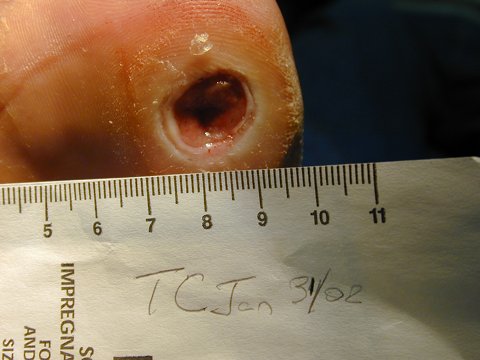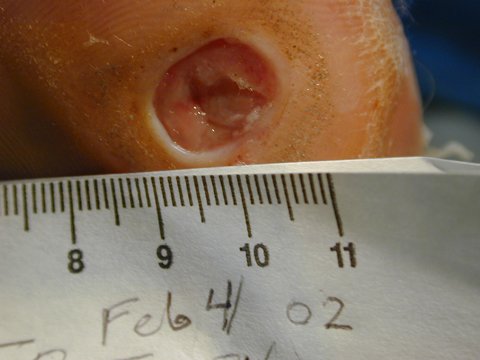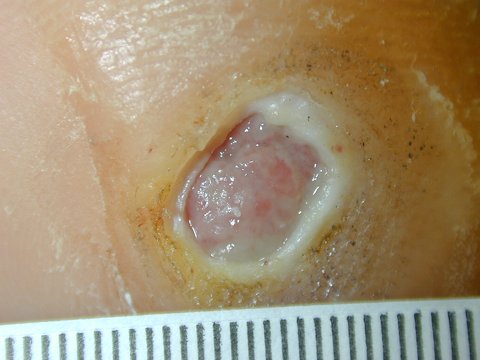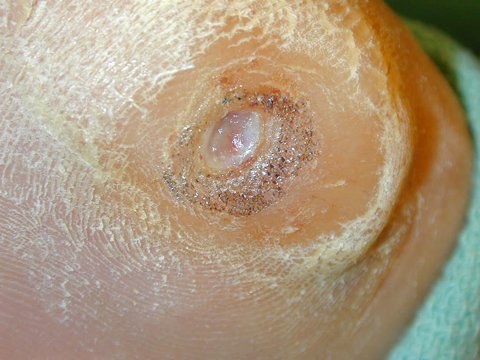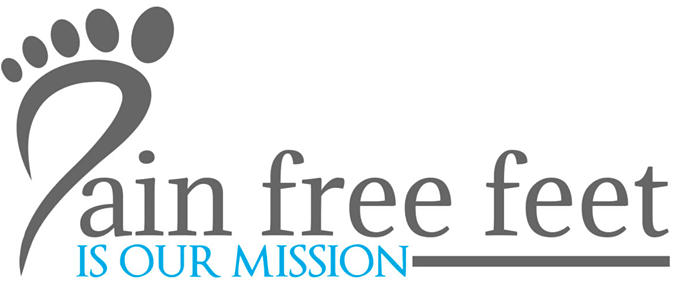Ulcerated Foot Wounds
A combination of poor circulation and lack of sensation (neuropathy) of the extremities, particularly the feet, can turn a scratch or splinter into a medical emergency for a person with diabetes. The lack of sensation prevents you from feeling if you have a wound, blister or the beginning of skin breakdown. This can be further complicated by poor blood flow to the area resulting in the lack of wound healing. Even the smallest wound or blister can become infected. Without aggressive treatment of the foot infection extensive tissue damage often occurs. This can result in either a toe, a partial foot or a lower leg amputation.
Proper footcare (see Diabetic Footcare Dos and Don’ts), can help reduce the risk of foot ulcers.
The following ulcer develop over previously amputated 1st digit. The ulcer site after sharp surgical debridement of the overlying necrotic tissue.
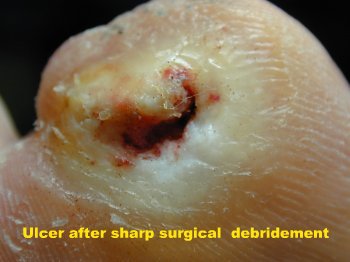
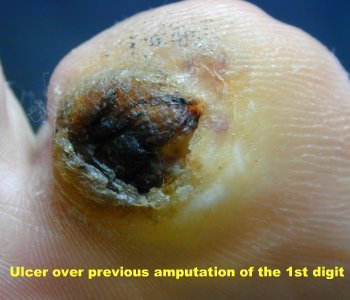
Amputations
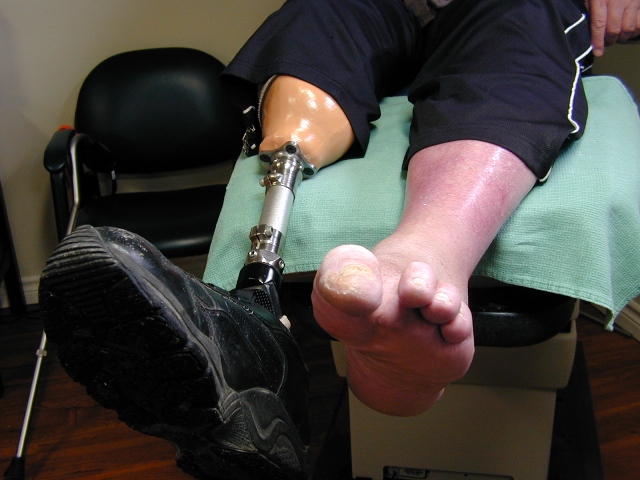 The possibility of an amputation of the lower extremity is not a topic people like to discuss, but people with diabetes must be aware of this devastating complication. Many people – young and old alike – lose limbs to diabetes.
The possibility of an amputation of the lower extremity is not a topic people like to discuss, but people with diabetes must be aware of this devastating complication. Many people – young and old alike – lose limbs to diabetes.
Almost 80 % of all lower limb amputations are due to diabetes complications
Fortunately, regular medical care, daily self-exams of the feet, along with lifestyle changes can help to prevent future amputation. Even something as simple as wearing comfortable shoes or never walking barefoot can make a major difference. Medical experts also recommended wearing a shock-absorbing protective sock to safeguard the feet.
1 in 5 people with diabetes enters the hospital for foot problems, including amputation
Diabetics have a 18 times greater risk of requiring a lower extremity amputation
Source: Public Health Agency of Canada, using NDSS data files contributed by provinces and territories, as of April 2009
Wound care
The following diabetic ulcer was healed over a 6 week period with sharp surgical debriement of dead tissue around the ulcer site along with the off loading of pressure away from the wound site.
